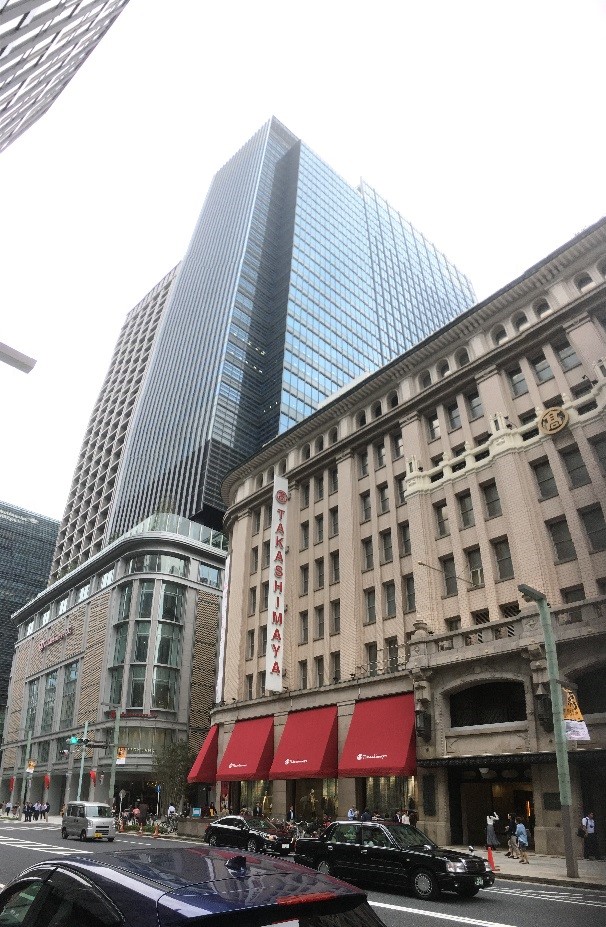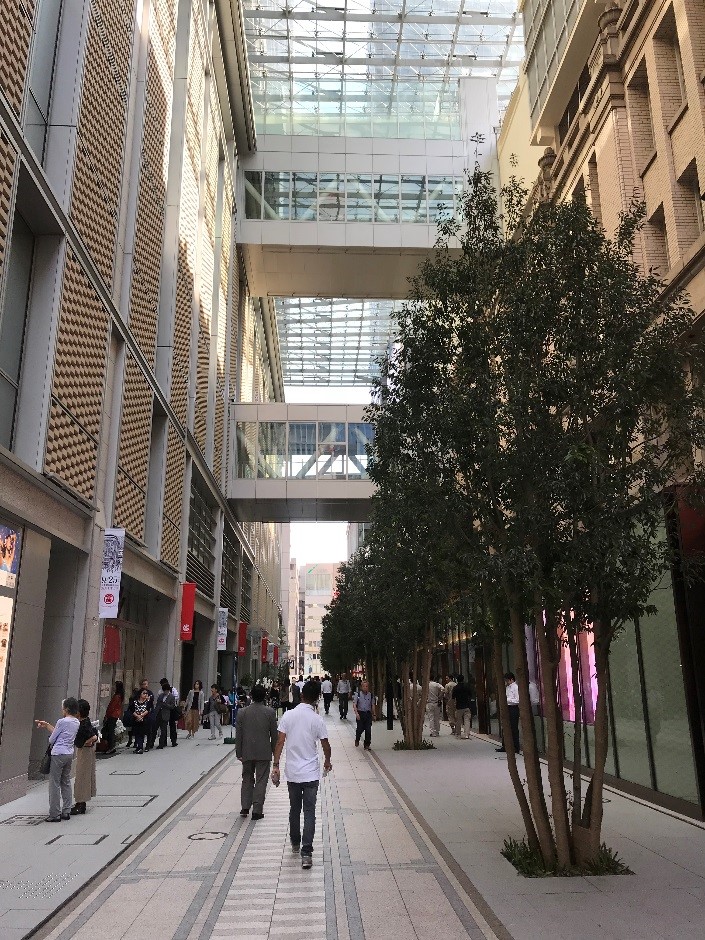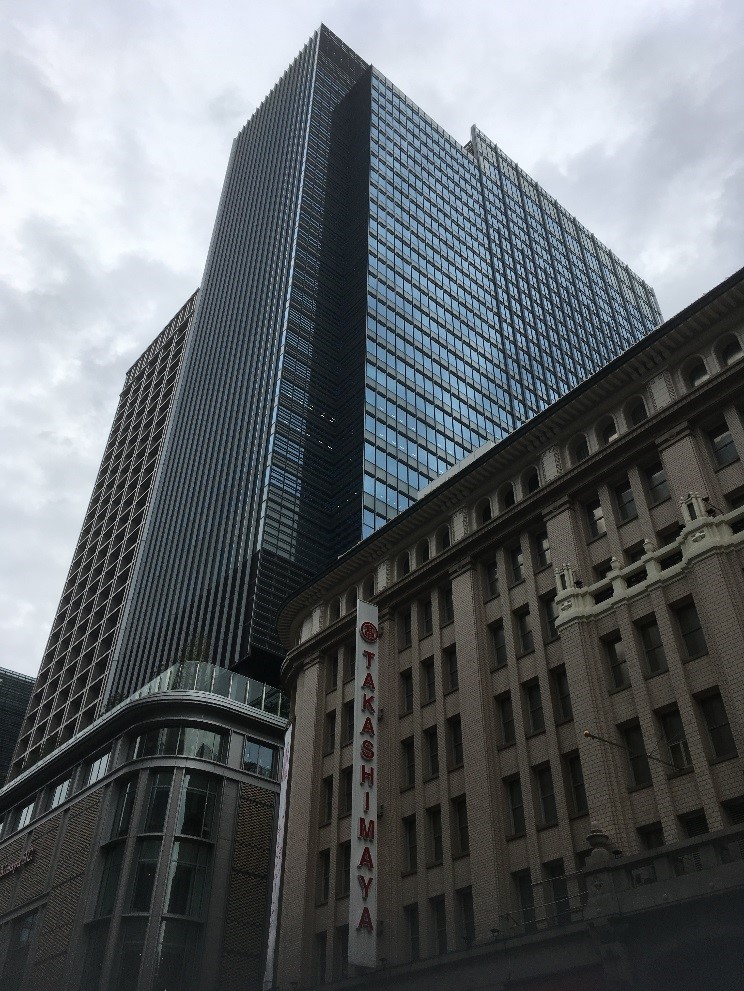“Tokyo Review 017” Nihombashi area-1
Launch of Nihombashi Takashimaya S.C. as part of the “Nihombashi Revitalization Plan”
On September 25, 2018, Nihombashi Takashimaya S.C. (Shopping Center) launched occupying spaces from the basement 1st floor up to the 7th floor of the brand-new complex “Nihombashi Takashimaya Mitsui Building”. This building has been constructed in the C plot among the three plots in the Nihombashi 2 Chome District Urban Redevelopment Project, and the floors from the 8th floor to the 32nd floor are used for rental offices.
This is one of the “Nihombashi Revitalization Projects”, preserving the Takashimaya Main Building which was built in 1933 and designated as a national cultural heritage in 2009, accompanied by construction of two office complexes on its east side and north side. The east tower had already been completed in March 2018, and by the completion of the north tower (new annex), we can see the entire feature of the project.
Nihombashi area had been built up in a relative early period by those department stores and small/medium sized office building for own-use/rent. I suppose this is one reason why the race for the office development came to Nihombashi relatively late after the construction of tall buildings in Nishi-Shinjuku and the other areas after the 70’s. Besides, when the bubble economy collapsed, plural securities companies along Eitai-Dori Avenue had bankrupted followed by the economic subsiding period. However, after the completion of COREDO Nihombashi (Nihombashi 1-chome Mitsui Building) in 2004 and Nihombashi Mitsui Tower in 2005, large complex buildings such as COREDO Muromachi 1, 2, 3, Tokyo Nihombashi Tower and so on have been developed one after another in 2010’s.
At the foot of these buildings, we can often see roadside shops of “long-established brands”. From one point of view, this urban redevelopment cannot be realized without the understanding and co-operation by those shops. On the other hand, probably, from the standpoint of the developer, these “long-established brands” are valuable cultural heritage that they want to preserve as legacies and make them as identities of the projects.
In a series of NHK program called “Large Edo” which aired from April to July in 2018, Edo (the old name of Tokyo) was introduced as “City of Water”, “City of Commerce” and “City of Great Fire”. From such viewpoints, Nihombashi can exactly be recognized as “the critical node for water transport “, “the birthplace of big merchants and long-established brands” and “the city that stood up many times after great fires”.
Now I would like to start exploring the area around Nihombashi 1 to 3 Chome, Muromachi, Honkoku Cho for a while as Tokyo Review “Nihombashi Area” Series. Please stay tuned!


